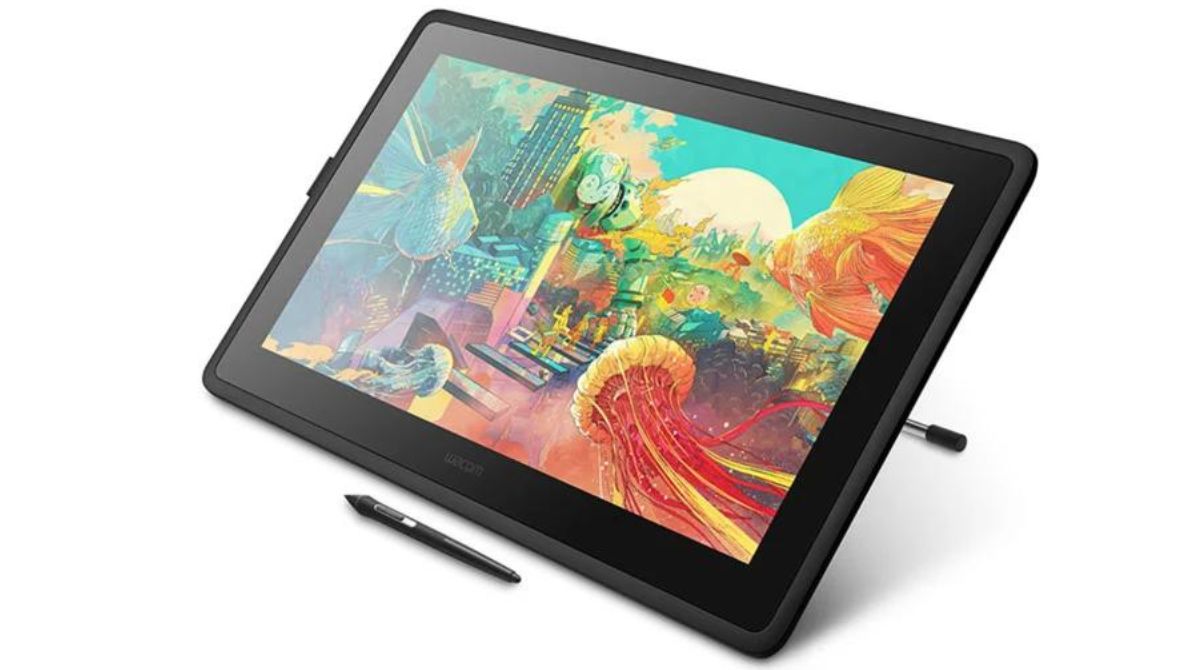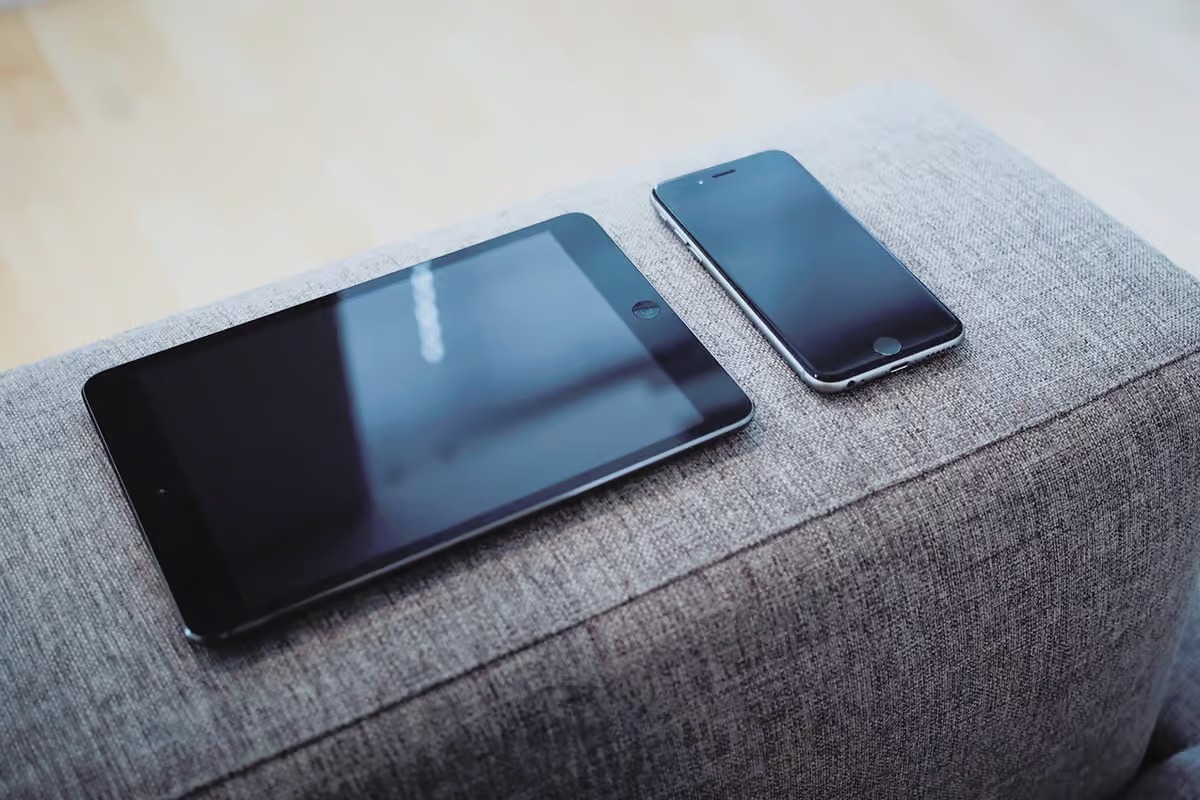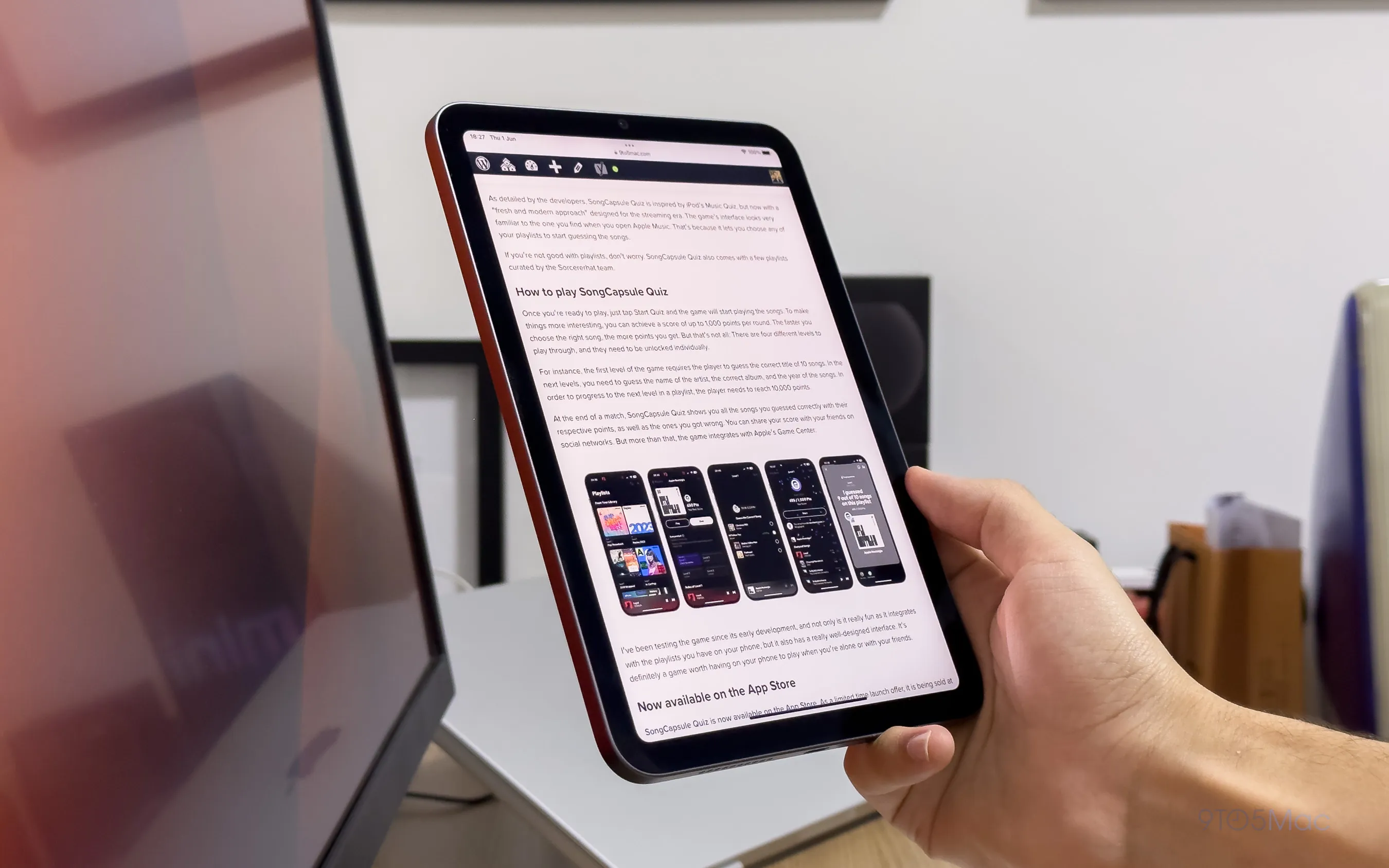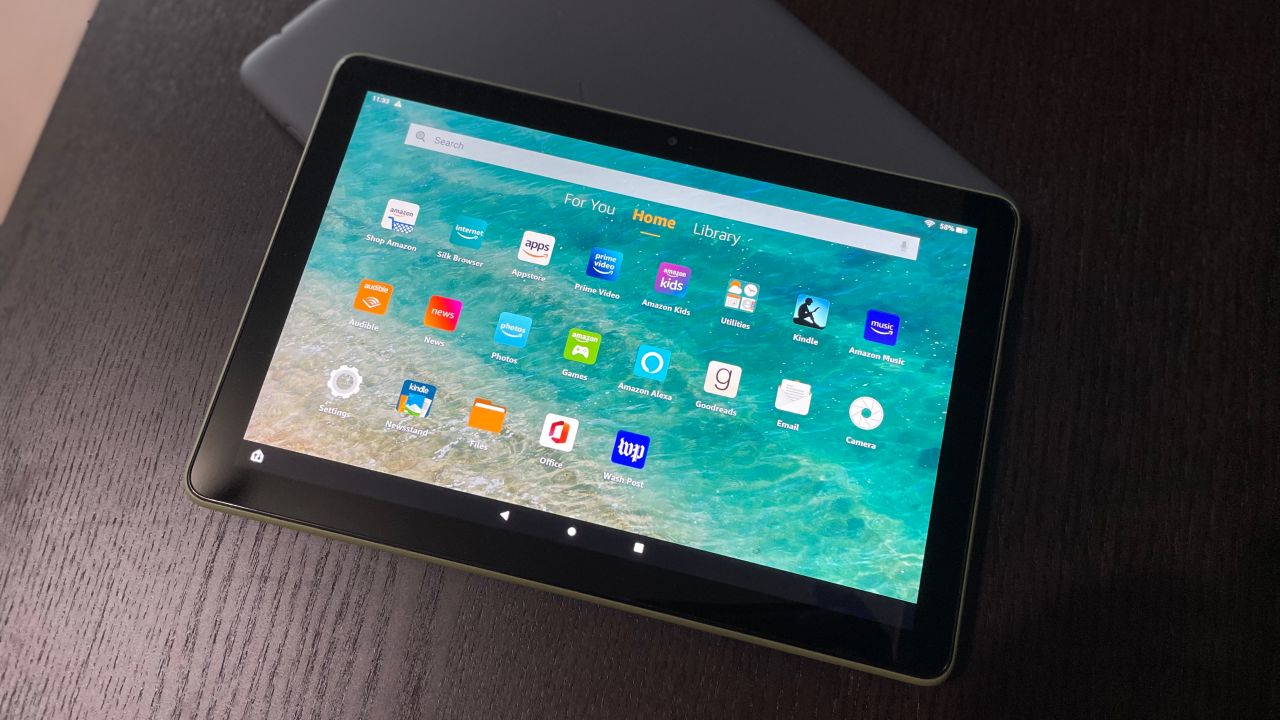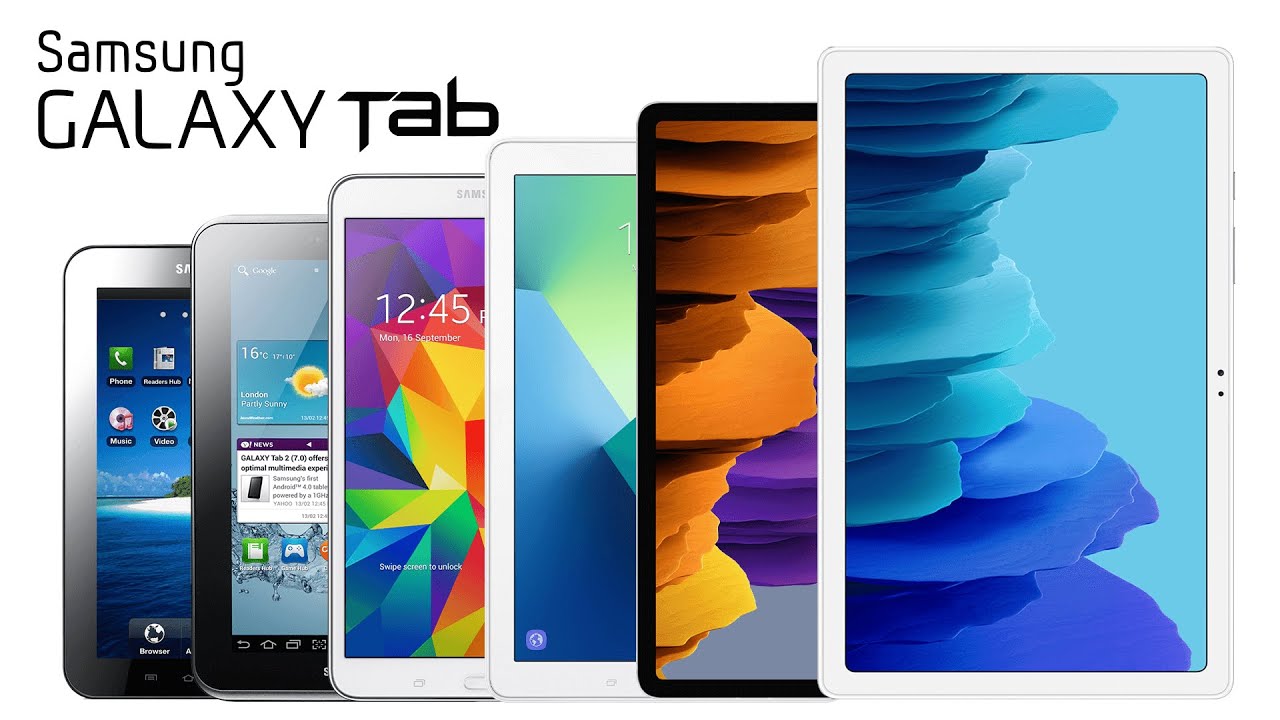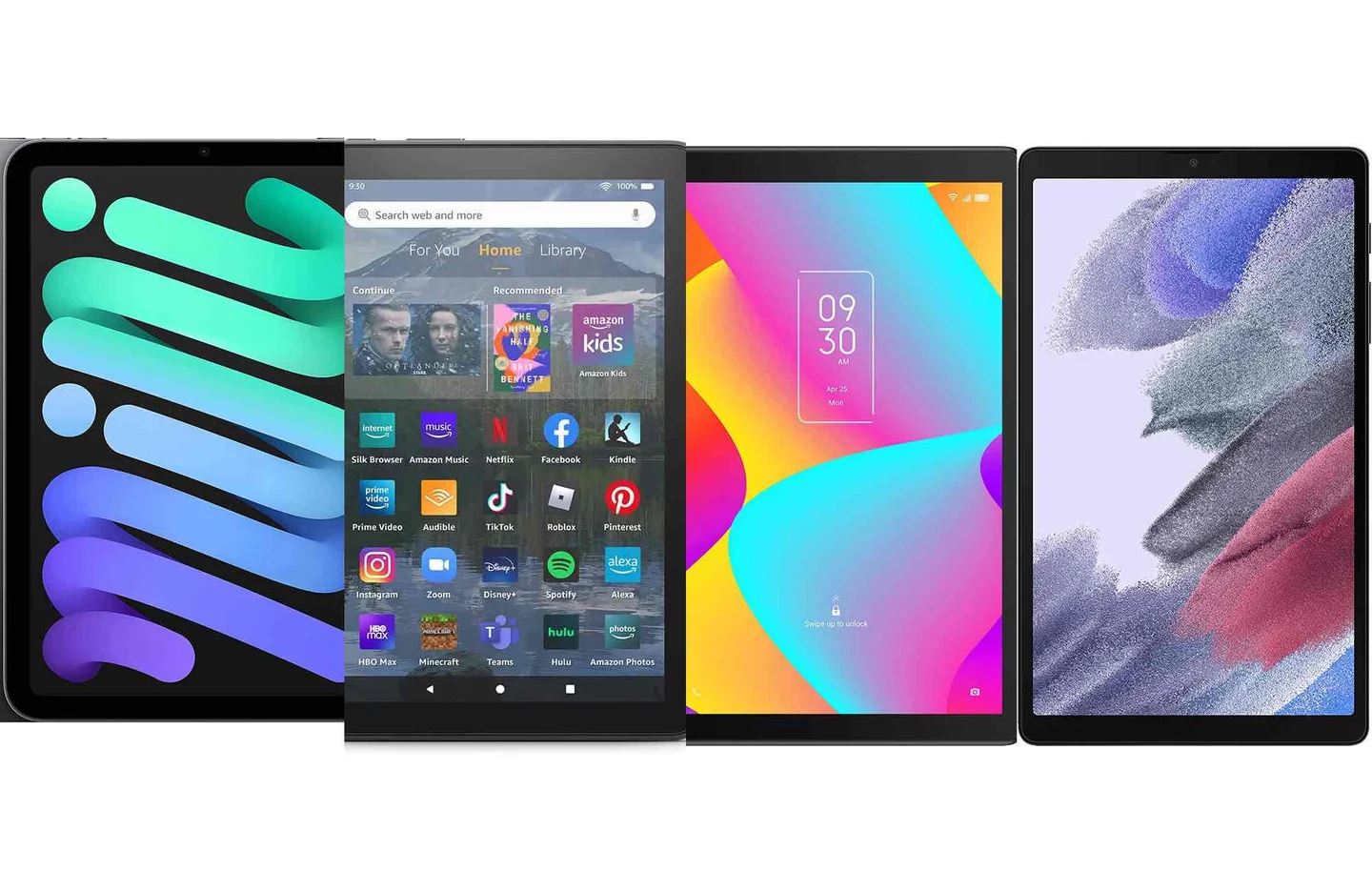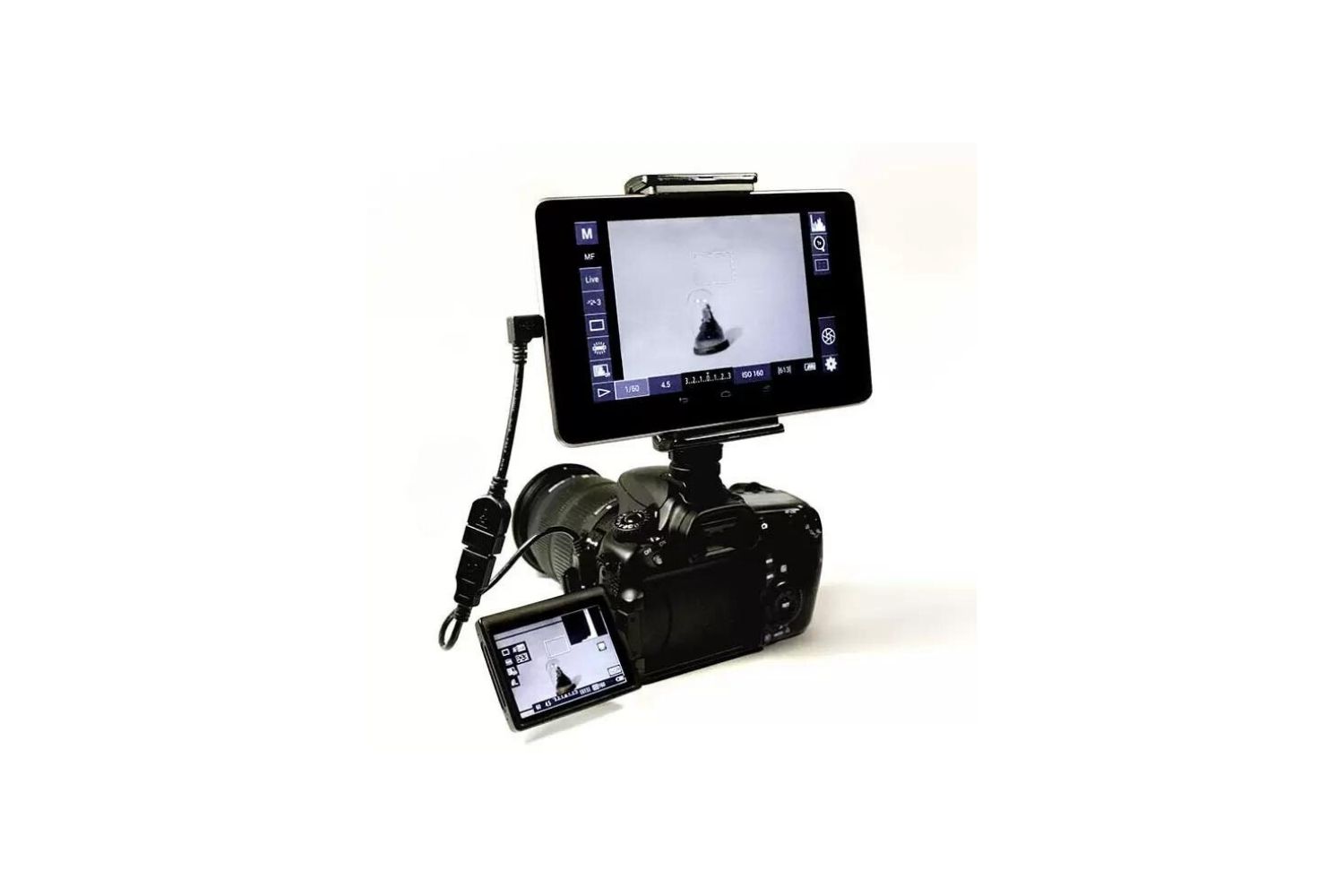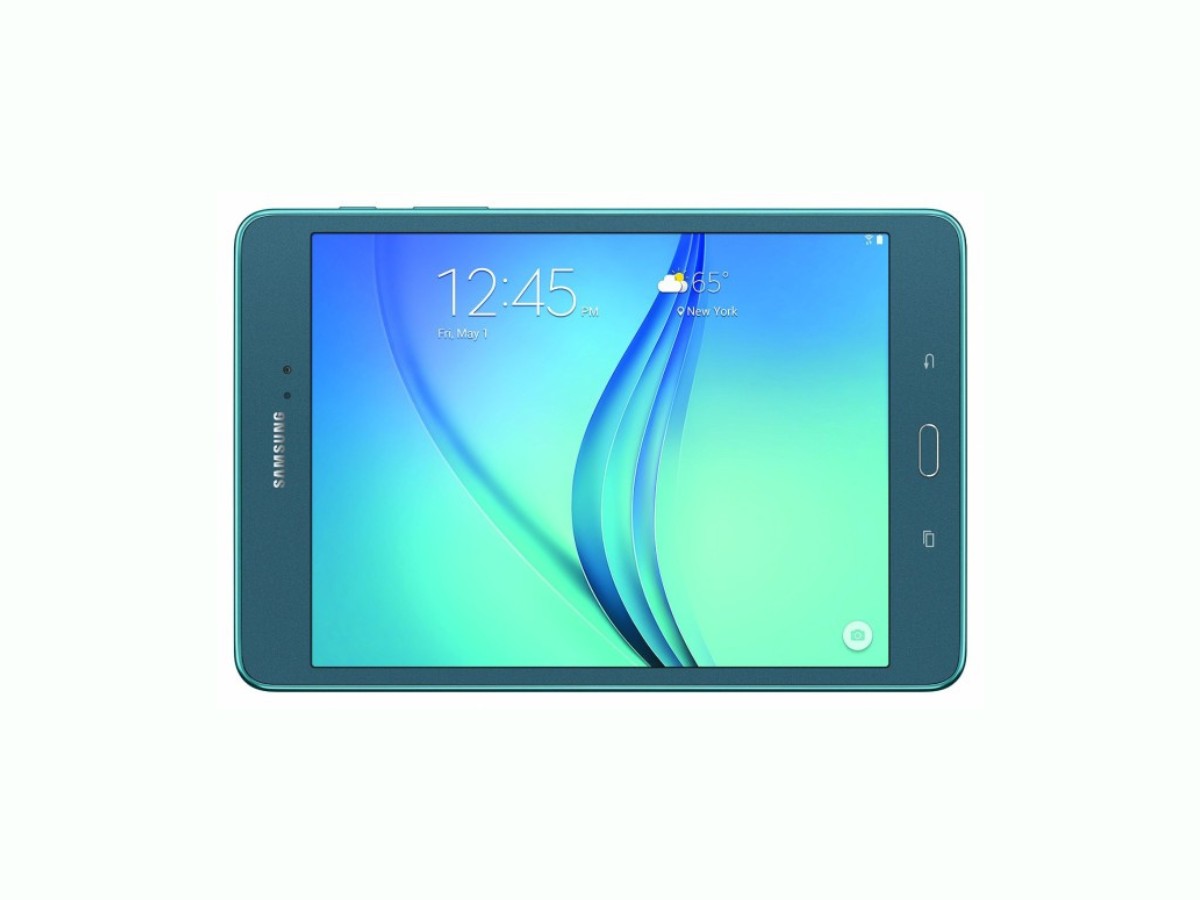Introduction
Welcome to the world of digital photography, where capturing stunning images is just the start of the creative journey. As a photographer, you understand the importance of precision and control in your work. That’s why having the right tools is essential. While a mouse can be sufficient for everyday tasks on your computer, when it comes to the intricate details of photo editing and retouching, a graphics tablet can take your skills to the next level.
A graphics tablet is a device that allows you to draw or input commands on a digital surface using a pen-like stylus. It offers a more natural and intuitive way to interact with your computer, mimicking the experience of drawing or painting on paper. With a sensitive and pressure-responsive drawing surface, you can easily control the flow of your strokes, making adjustments with precision and finesse.
For photographers, using a graphics tablet can bring a multitude of benefits. Firstly, it offers a more precise and accurate input method compared to a mouse. This means you can make detailed adjustments to your images, such as retouching imperfections or enhancing fine details, with greater ease and control. The pressure sensitivity of the stylus allows for varying degrees of opacity and brush size, enabling you to create more realistic and nuanced effects in your edits.
Another advantage of using a graphics tablet for photography is the ergonomic design. Unlike a mouse, which requires you to move and click repeatedly, a tablet and stylus offer a more comfortable and natural hand position. This can reduce strain and fatigue during long editing sessions, allowing you to focus on your creativity and productivity.
Furthermore, a graphics tablet provides a seamless digital workflow. Many tablets come with customizable buttons and touch gestures, allowing you to assign shortcuts for commonly used tools or functions. This streamlines your editing process, saving you time and increasing efficiency.
When choosing a graphics tablet for photography, there are several factors to consider. These include the size and resolution of the tablet, the sensitivity and accuracy of the stylus, and compatibility with your computer’s operating system and software. It’s also important to consider your budget and level of experience, as different tablets offer varying features and price points.
In this article, we will explore some popular graphics tablets for photography and delve into their features and advantages. Whether you’re a professional photographer or an enthusiast looking to enhance your creative endeavors, finding the right graphics tablet can elevate your editing skills and unlock new artistic possibilities.
What is a Graphics Tablet?
A graphics tablet, also known as a drawing tablet or pen tablet, is a digital input device that allows users to create and interact with digital content using a stylus or pen-like tool. It consists of two main components: a flat tablet-like surface and a pressure-sensitive stylus.
The tablet surface is usually made of a smooth and durable material that provides a responsive and accurate drawing area. This surface is where users can draw, write, or input commands using the stylus. The stylus, often equipped with buttons and an eraser, works in conjunction with the tablet to translate the user’s movements and pressure into digital signals.
Graphics tablets come in various sizes, ranging from small and portable options to large professional-grade tablets. The size you choose depends on your personal preference and the type of work you’ll be doing. Larger tablets offer more drawing area, making them ideal for professional graphic designers and digital artists who require precise control and detail.
The pressure sensitivity of a graphics tablet is a key feature that sets it apart from a regular mouse or trackpad. This sensitivity allows the tablet to recognize and respond to different levels of pressure applied by the stylus. By varying the pressure, users can control the thickness and opacity of their strokes, simulating the effects of using different brushes or pencils on traditional media.
Graphics tablets are widely used in various creative industries, including photography, illustration, graphic design, and animation. In the realm of photography, graphics tablets offer photographers the ability to precisely retouch and enhance their images. By using a stylus to make adjustments, photographers can achieve more natural and seamless edits, such as removing blemishes, adjusting exposure, or fine-tuning colors.
Many graphics tablets also come with additional features and functionality. Some tablets have built-in touch controls, allowing users to manipulate images or navigate software with gestures. Others may have programmable buttons or customizable shortcuts, enabling users to streamline their workflow and access frequently used tools or commands with ease.
To use a graphics tablet, you generally connect it to your computer via a USB or wireless connection. It’s important to ensure that the tablet is compatible with your computer’s operating system and software. Most graphics tablets are designed to work seamlessly with popular digital art and image editing software, such as Adobe Photoshop and Lightroom.
Overall, a graphics tablet is a powerful tool for photographers and creative professionals. It offers a more intuitive and precise way to interact with digital content and provides a seamless workflow for editing and retouching photographs. By integrating a graphics tablet into your photography toolkit, you can elevate your editing skills and unlock your creative potential.
Benefits of Using a Graphics Tablet for Photography
Using a graphics tablet for photography can significantly enhance your editing process and elevate the quality of your final images. Here are some key benefits of incorporating a graphics tablet into your photography workflow:
- Precision and Control: A graphics tablet provides a more precise and accurate input method compared to a traditional mouse or trackpad. The stylus allows you to make precise adjustments and retouching, making it easier to remove imperfections, enhance details, or selectively adjust areas within an image.
- Pressure Sensitivity: Graphics tablets offer pressure sensitivity, which allows the tablet to detect the amount of pressure applied by the stylus. This feature lets you control the opacity and thickness of your brush strokes, creating more natural and realistic effects in your edits.
- Ergonomics: The ergonomic design of a graphics tablet ensures a more comfortable and natural hand position while editing. Unlike a mouse, which requires repetitive movements and can cause strain over time, a graphics tablet and stylus allow for a more relaxed and fluid workflow.
- Seamless Workflow: Many graphics tablets come with programmable buttons or customizable shortcuts, allowing you to assign common editing functions or tools to these buttons. This enables you to streamline your editing process, saving you time and increasing efficiency.
- Precise Selections: With a graphics tablet, you can easily create precise selections with your stylus. This is particularly useful when working on complex images that require detailed masking or selection refinement.
- Non-Destructive Editing: When using a graphics tablet, you can take advantage of non-destructive editing techniques. This means you can make adjustments to your images without permanently altering the original file. Graphics tablets allow for precise control and fine-tuning, ensuring that your edits are seamlessly integrated into your workflow.
- Artistic Freedom: With a graphics tablet, you can unleash your creativity and explore new artistic possibilities. The stylus allows for more natural and expressive brush strokes, giving you the freedom to experiment with different editing techniques and styles.
Overall, using a graphics tablet improves your editing accuracy, speed, and overall creative experience. It allows you to have greater control over your edits, resulting in more professional and polished photographs. Whether you’re a professional photographer or an enthusiast looking to take your skills to the next level, incorporating a graphics tablet into your photography workflow can be a game-changer in achieving your vision.
Considerations When Choosing a Graphics Tablet for Photography
When it comes to choosing a graphics tablet for photography, there are several factors to consider. Each photographer’s needs and preferences may vary, so it’s important to evaluate these factors before making a decision. Here are some key considerations to keep in mind:
- Size and Resolution: Graphics tablets come in various sizes, ranging from small and portable to large professional-grade options. Consider your workspace and editing style to determine the ideal tablet size for your needs. Higher resolution tablets offer greater detail and precision, which is crucial for fine editing work.
- Pressure Sensitivity: The pressure sensitivity of the stylus is an essential feature to look for in a graphics tablet. More sensitive tablets allow for greater control over brush strokes and opacity adjustments, resulting in more precise and natural-looking edits.
- Compatibility: Ensure that the graphics tablet you choose is compatible with your computer’s operating system and the software you use for post-processing. Most graphics tablets are compatible with both Windows and macOS, but it’s always a good idea to double-check.
- Stylus Features: Consider the features of the stylus that comes with the tablet. Some styluses have customizable buttons or an eraser on the opposite end, allowing for quick access to frequently used commands or tools. The overall ergonomics and comfort of the stylus are also worth considering for long editing sessions.
- Additional Features: Graphics tablets may come with additional features such as touch input, programmable buttons, or customizable touch gestures. Evaluate these features based on your specific editing needs and workflow preferences.
- Budget: Graphics tablets come in a range of prices, so it’s important to consider your budget. Determine the features that are essential for your photography work and find a tablet that meets your requirements within your budget.
- User Reviews: Read user reviews and testimonials to get an idea of the experiences others have had with the graphics tablet you are considering. This can provide valuable insights into the tablet’s performance, durability, and overall user satisfaction.
- Personal Preference: Ultimately, choosing a graphics tablet is a personal decision. Consider your own preferences in terms of drawing surface, stylus design, weight, and overall user experience. If possible, try out different tablets in a store or seek recommendations from fellow photographers.
By carefully evaluating these considerations, you can find a graphics tablet that meets your specific needs and enhances your photography editing process. Remember, the right tablet for you is the one that fits comfortably into your workflow and allows you to unleash your creative potential.
Popular Graphics Tablets for Photography
When it comes to choosing a graphics tablet for photography, there are several popular options that are widely recommended by photographers and professionals in the industry. These tablets offer a range of features and capabilities to suit different needs and budgets. Here are some of the popular graphics tablets for photography:
- Wacom Intuos Pro: The Wacom Intuos Pro is a top choice among photographers and digital artists. It offers a range of sizes, including small, medium, and large, to accommodate different working styles. With high sensitivity levels and a sleek design, the Intuos Pro provides excellent precision and control for detailed editing. It also comes with customizable ExpressKeys and a touch ring to streamline your workflow.
- Huion Kamvas Pro: The Huion Kamvas Pro series is known for its affordability and performance. With a full laminated display and a wide color gamut, these tablets offer excellent image quality and accuracy. The Kamvas Pro lineup includes various sizes and models, with advanced features such as tilt recognition and battery-free stylus technology.
- XP-Pen Artist Pro: The XP-Pen Artist Pro series is another popular choice for photographers. These tablets feature high-resolution displays, exceptional color accuracy, and impressive pressure sensitivity. With customizable shortcut keys and a versatile stand, the Artist Pro tablets provide a comfortable and efficient editing experience.
- Apple iPad Pro with Apple Pencil: For photographers looking for a portable and versatile option, the Apple iPad Pro paired with the Apple Pencil is worth considering. The iPad Pro offers a high-resolution Retina display and powerful processing capabilities. Combined with the Apple Pencil, it provides a natural and responsive drawing and editing experience. With a wide range of photography apps available on iOS, the iPad Pro offers a comprehensive solution for mobile editing.
These are just a few examples of the popular graphics tablets available for photography. Each of these tablets has its own strengths and features, so it’s important to consider your specific needs and preferences when making a decision. Whether you prioritize sensitivity levels, display quality, size, or budget, there is a graphics tablet available to elevate your photography editing workflow.
Wacom Intuos Pro
The Wacom Intuos Pro is a leading graphics tablet that is highly regarded among photographers and artists. With its advanced features and precision, it has become a popular choice for professionals in the industry. Here are some key characteristics of the Wacom Intuos Pro:
Size Options: The Wacom Intuos Pro is available in several size options to cater to different working preferences and available desk space. It comes in small, medium, and large sizes, allowing you to choose the one that best suits your needs.
Sensitive and Responsive: The Intuos Pro offers exceptional sensitivity levels, detecting even the slightest variations in pen pressure. This sensitivity allows for precise control over brush strokes, making it ideal for detailed image editing and retouching.
Customizable ExpressKeys: One of the notable features of the Intuos Pro is its customizable ExpressKeys. These programmable buttons located on the tablet can be assigned to frequently used functions or shortcuts, allowing for a more efficient editing workflow and improved productivity.
Touch Ring: The Intuos Pro also includes a touch ring, which can be customized to perform various functions such as zooming, scroll, or adjusting brush size. This ring provides quick and intuitive control over different parameters, further enhancing the level of precision and efficiency in your editing process.
Pro Pen 2: The Wacom Intuos Pro comes equipped with the Pro Pen 2, a highly accurate and responsive stylus. The Pro Pen 2 offers exceptional pressure sensitivity, tilt recognition, and virtually lag-free tracking, providing a natural and seamless drawing experience.
Wireless Connectivity: For added convenience, the Intuos Pro offers wireless connectivity options, allowing you to work without the constraints of cables. This provides flexibility in your workspace setup and helps reduce clutter.
Compatibility: The Wacom Intuos Pro is compatible with both Windows and macOS operating systems, making it versatile for various setups. It also works seamlessly with popular image editing software such as Adobe Photoshop and Lightroom, ensuring a smooth integration into your photography workflow.
The Wacom Intuos Pro is highly regarded for its build quality, reliability, and performance. It provides photographers with a powerful tool to enhance their editing skills and unleash their creativity. Whether you’re a professional or an enthusiast, the Wacom Intuos Pro is a solid choice for taking your photography editing to the next level.
Huion Kamvas Pro
The Huion Kamvas Pro series is a popular line of graphics tablets that has gained recognition among photographers and digital artists. Known for its affordability and performance, the Huion Kamvas Pro offers a range of features that make it a compelling choice for photographers. Here are some key highlights of the Huion Kamvas Pro:
Display Quality: The Huion Kamvas Pro tablets boast high-resolution displays with excellent color accuracy and wide color gamut, allowing photographers to view their images in vibrant detail. The full laminated screens minimize parallax, providing a more natural and immersive drawing and editing experience.
Pressure Sensitivity and Tilt Recognition: The Kamvas Pro series offers impressive pressure sensitivity, enabling precise control over brush strokes and opacity adjustments. This sensitivity allows photographers to create intricate and nuanced edits, mimicking the effects of traditional drawing tools. Additionally, some models in the Kamvas Pro series include tilt recognition, allowing for more dynamic and expressive drawing techniques.
Battery-Free Stylus: The Kamvas Pro tablets come with a battery-free stylus that eliminates the need for frequent battery replacements. The stylus offers a comfortable grip and accurate tracking, allowing photographers to work for extended periods without interruption.
Customizable Shortcut Keys: To enhance productivity and streamline workflow, the Kamvas Pro tablets feature customizable shortcut keys. These buttons can be assigned to commonly used functions or software shortcuts, providing easy access to frequently performed actions and saving valuable time during the editing process.
Ergonomic Stand: Many models of the Huion Kamvas Pro are equipped with an adjustable stand, allowing users to find their preferred working angle. The stand provides stability and comfort during long editing sessions, reducing strain and fatigue.
OS Compatibility: The Huion Kamvas Pro tablets are compatible with both Windows and macOS operating systems, ensuring flexibility in terms of software compatibility and allowing photographers to seamlessly integrate the tablet into their existing setups.
The Huion Kamvas Pro series is highly regarded for its affordable price point while delivering impressive performance and features. Whether you’re a professional photographer or an enthusiast, the Kamvas Pro offers a reliable and budget-friendly graphics tablet option to meet your creative needs.
XP-Pen Artist Pro
The XP-Pen Artist Pro series is a popular choice among photographers and artists looking for a graphics tablet that offers exceptional performance and features. With its high-resolution displays and impressive pressure sensitivity, the XP-Pen Artist Pro tablets provide a seamless and intuitive editing experience. Here are some key features of the XP-Pen Artist Pro:
High-Resolution Display: The XP-Pen Artist Pro tablets come with high-resolution displays, offering vibrant colors and excellent image quality. Whether you’re retouching photos or creating digital artwork, the display allows for precise detail visibility, ensuring that your edits accurately reflect your intentions.
Pressure Sensitivity: With impressive pressure sensitivity levels, the XP-Pen Artist Pro tablets enable you to control the thickness and opacity of your brush strokes with precision. The advanced pressure sensitivity allows for a more natural and realistic drawing and editing experience.
Customizable Shortcut Keys: The Artist Pro tablets feature customizable shortcut keys that can be programmed to suit your needs. These buttons provide quick access to frequently used functions and tools, enhancing your productivity and streamlining your editing workflow.
Versatile Stand: Many models in the XP-Pen Artist Pro series come with a versatile stand that offers multiple angle adjustments. This allows you to find the most comfortable and ergonomic position for your tablet, reducing strain and allowing you to work for longer periods without discomfort.
Compatibility: The XP-Pen Artist Pro tablets are compatible with both Windows and macOS operating systems, ensuring seamless integration into your existing setup. They also work well with popular image editing software, offering a smooth and efficient editing experience.
Stylus Technology: The XP-Pen Artist Pro tablets come with a battery-free stylus that provides a natural drawing experience. The stylus offers high accuracy and precision, allowing for fine details and seamless control over your edits.
Overall, the XP-Pen Artist Pro series is highly regarded for its outstanding features, performance, and affordable pricing. Whether you’re a professional photographer or an enthusiast, the Artist Pro tablets offer a reliable and capable option to enhance your editing process and unleash your creative potential.
Apple iPad Pro with Apple Pencil
The Apple iPad Pro paired with the Apple Pencil is a popular choice for photographers who prefer a portable and versatile option for their editing needs. With its powerful hardware and compatibility with a wide range of photography apps, the iPad Pro provides a unique and seamless editing experience. Here are some key features of the Apple iPad Pro with Apple Pencil:
Portability and Mobile Editing: The iPad Pro offers unparalleled portability, allowing photographers to edit their images on the go. Its slim and lightweight design makes it easy to carry, making it a convenient choice for travel or location shoots. With the Apple Pencil, photographers can enjoy a precise and responsive drawing and editing experience, similar to using a traditional pen or brush.
Retina Display: The iPad Pro boasts a high-resolution Retina display, delivering stunning image quality and vibrant colors. This display allows photographers to view and edit their images in sharp detail, ensuring accurate editing and precise adjustments.
Apple Pencil: The Apple Pencil is a highly responsive stylus that offers impressive pressure sensitivity and tilt recognition. It allows for precise and fluid brush strokes, providing a natural and seamless editing experience. The Apple Pencil also supports palm rejection technology, ensuring that only the stylus input is recognized while resting your hand on the screen.
Wide Range of Photography Apps: The Apple App Store offers a diverse selection of photography apps that leverage the power and capabilities of the iPad Pro. From powerful image editing apps like Adobe Photoshop and Lightroom to specialized photo retouching and manipulation tools, photographers have access to a wealth of creative options.
Apple Ecosystem: The iPad Pro seamlessly integrates into the Apple ecosystem, allowing for easy synchronization and sharing of files across multiple devices. This makes it convenient for photographers who already use other Apple devices, ensuring a smooth and efficient workflow.
Apple iCloud Storage: The iPad Pro offers the option to store and access your edited photos and files seamlessly through Apple’s iCloud storage service. This allows photographers to edit images on the iPad Pro and pick up where they left off on other Apple devices, making it a flexible and convenient choice for editing.
Overall, the Apple iPad Pro with Apple Pencil offers photographers a portable, versatile, and highly capable option for editing their photos. With its powerful hardware, stunning display, and compatibility with a wide range of photography apps, the iPad Pro provides a complete and immersive editing experience that can transform the way photographers work and unleash their creativity.
Conclusion
When it comes to photography, having the right tools can make a significant difference in the quality of your work. A graphics tablet offers photographers a more precise, natural, and efficient way to edit and enhance their images. The benefits are numerous, including greater control over brush strokes, pressure sensitivity for nuanced adjustments, and improved ergonomics for longer editing sessions.
In this article, we explored the world of graphics tablets for photography and highlighted some popular options. The Wacom Intuos Pro impressed with its customizable ExpressKeys, sensitive stylus, and various size options. The Huion Kamvas Pro series stood out for its affordability, high-resolution displays, and battery-free stylus. The XP-Pen Artist Pro tablets impressed with their customizable shortcut keys, versatile stands, and excellent compatibility. Lastly, the Apple iPad Pro with Apple Pencil offered a unique and portable editing experience, integrating seamlessly with other Apple devices and providing access to a wide range of photography apps.
When choosing a graphics tablet for photography, it’s important to consider factors such as size, pressure sensitivity, compatibility, and overall user experience. Each photographer’s needs and preferences may vary, so it’s crucial to select a tablet that aligns with your editing style and budget.
In conclusion, incorporating a graphics tablet into your photography workflow can greatly enhance your editing process, allowing for more precise adjustments, increased productivity, and ultimately, stunning final images. Whether you’re a professional photographer or an enthusiast, a graphics tablet can take your photography skills to new heights and unlock your creative potential.







